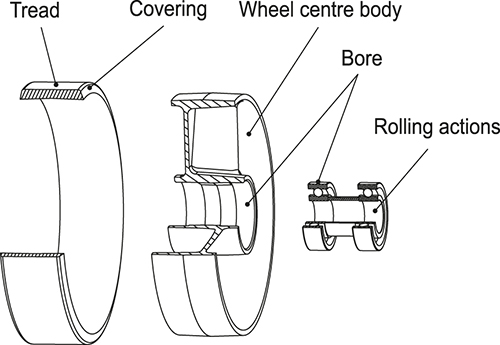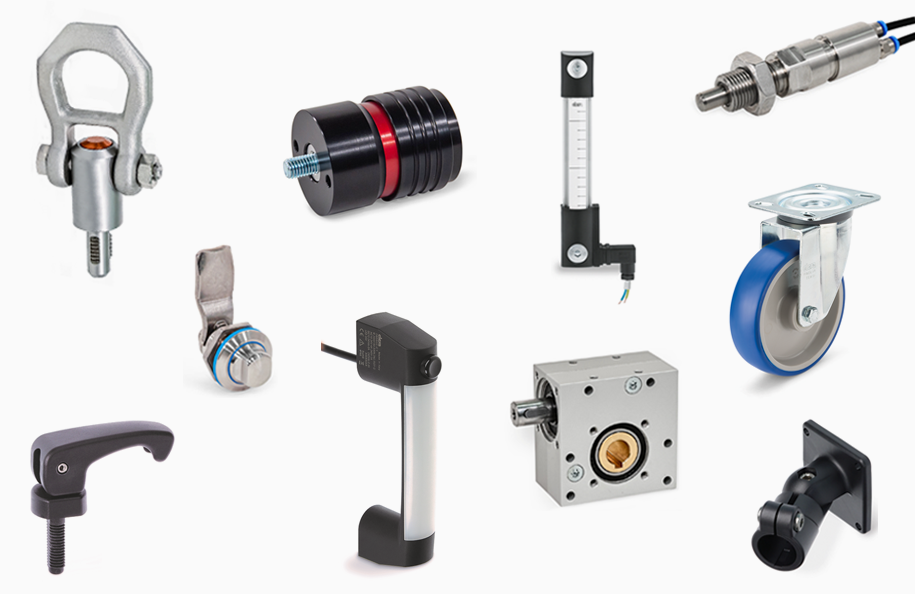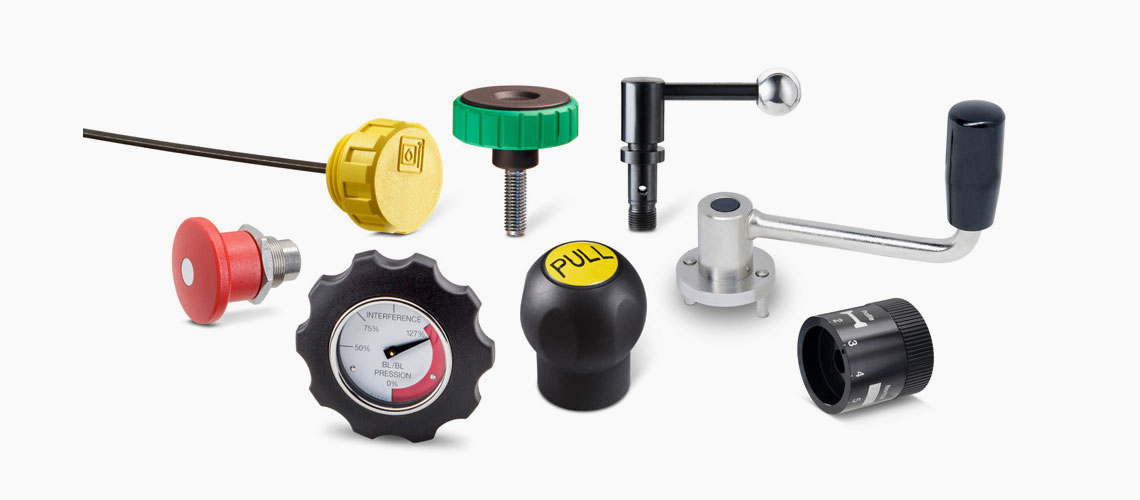1. GENERAL INFORMATION
The wheel is a mechanical assembly in which sliding motion is replaced by rolling motion through rotation around an axis. The wheel consists of the following components: the tread, the covering, the wheel centre body, the bore and the rolling action.

- Tread
The tread is the wheel's outer surface, i.e. the part that comes in contact with the ground. It;can be smooth or engraved with raised patterns to increase its grip on the ground.
- Covering
The covering, or rolling strip, is the outer ring. It is made of different materials and;characterises the wheel. The covering is fixed when joined with the wheel centre body as;a single solid piece (using an adhesive or through a mechanical connection) or fitted when mechanically assembled on the wheel centre body.
- Wheel centre body
The wheel centre body is the wheel part that connects the covering to the bore. It comes invarious shapes and is made of different materials; it can be a single piece or two or more parts joined together.
- Bore and rolling actions
The bore is the middle part of the wheel that houses the axle or the rolling actions that make rotation easier (ball bearings, roller bearings, plain bearings, etc.). Depending on the construction methods and materials forming the covering, wheels can be divided into three families: rubber wheels, polyurethane wheels and monolithic (or hard tread)wheels.
-
Generals
-
1. Plastic materials
- 1.1 Mechanical strength
- 1.2 Thermal resistance
- 1.3 Strength and surface hardness
- 1.4 Resistance to chemical agents
- 1.5 Resistance to atmospheric agents and uv rays
- 1.6 Flame resistance
- 1.7 Electrical properties
- 1.8 Surface finish and cleanability
- 1.9 Compliance with international standards
- 1.10 Competence of Elesa+Ganter technical department
- 2. Metal materials
- 3. Other materials
- 4. Machining tolerances
- 5. Fixed handles
- 6. Assembly measures
- 7. Special executions
- 8. Colours
- 9. Test values
-
10. Technical tables
- 10.1 Conversion tables
- 10.2 DIN 79 Square holes and shafts
- 10.3 DIN 6885 Keyways
- 10.4 GN 110 and GN 110.1 Transversal holes
- 10.5 DIN 13 ISO Metric threads
- 10.6 DIN 228 Cylindrical GAS-BSP threads
- 10.7 DIN EN ISO 898-1 | DIN EN 20898-2 Strenght values
- 10.8 DIN ISO 286 ISO-Fundamental tolerances
- 10.9 IP Protection Classification
- 10.10.1 PFB | PRB Thread locking with jamming action Polyamide patch coating/ Polyamide complete coating
- 10.10.2 MVK Thread locking gluing Micro encapsulation precote 80 (red)
- 10.11 Stainless Steel characteristics
- 10.12 Surface treatments
- 10.13 Carbon steel, zinc alloys, aluminium, brass characteristics
- 10.14.1 Duroplast, elastomer, technopolymer and rubber characteristics
- 10.14.2 Duroplast, elastomer, technopolymer and rubber characteristics
- 10.14.3 Duroplast, elastomer, technopolymer and rubber characteristics
- 10.15 Load ratings U-Handles
- 10.16 Load ratings metal hinges
- 10.17 Strength of indexing plungers
- 10.18 Assembly sets GN 965 and GN 968
- 11. Vibration-damping elements
-
1. Plastic materials
- Hygienic design
- Operating Elements
- Clamping knobs
- Control elements
- Rotary controls
- Indexing elements
- Joints
- Transmission elements
- Levelling elements
- Hinges
- Latches
- Toggle, power and hook clamps
- Accessories for hydraulic systems
- Tube clamp connectors
- Castors and wheels
- Magnets
- Conveyor components
- Linear slides
- Vibration mounts
- Vacuum components
- Elastomer springs



